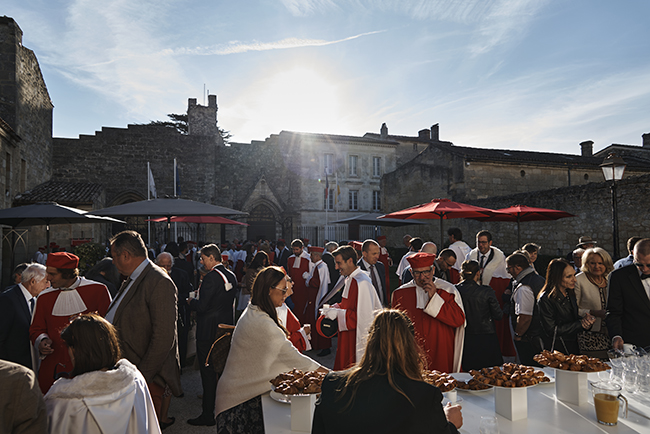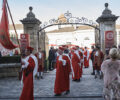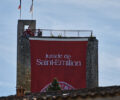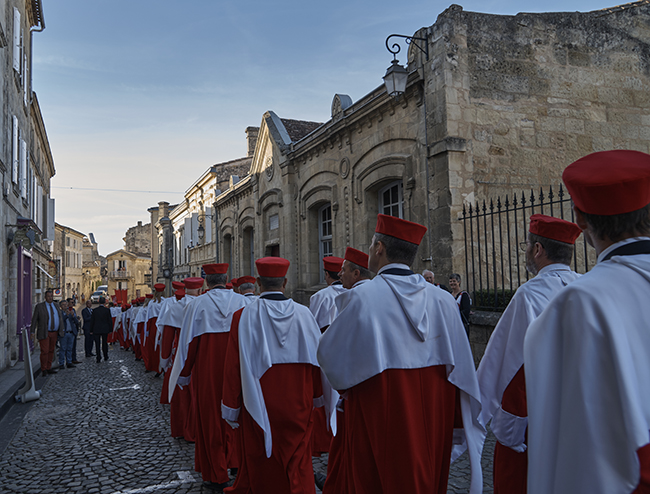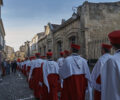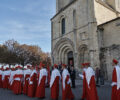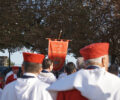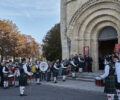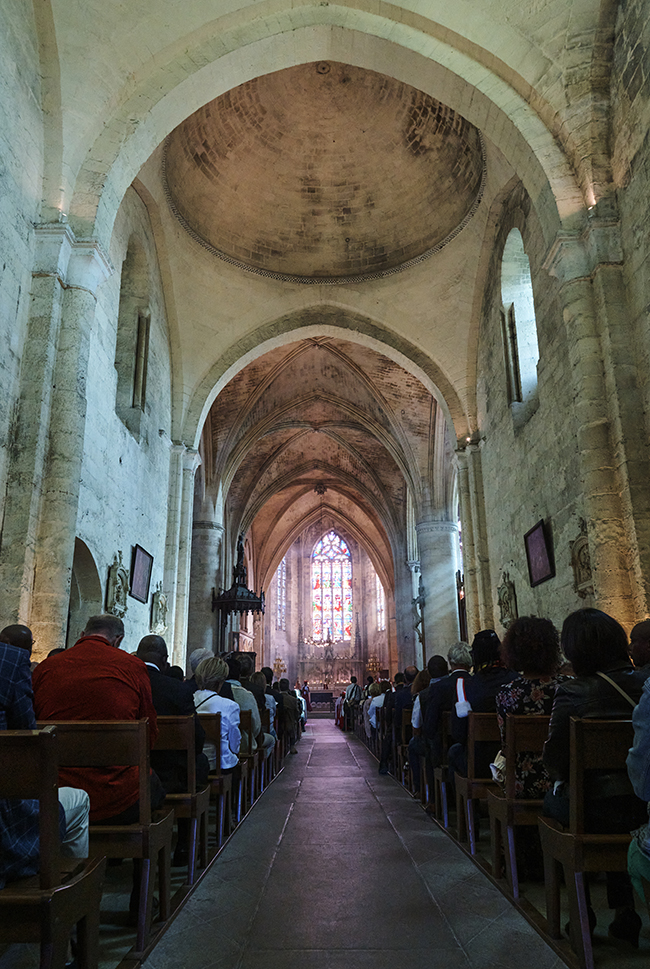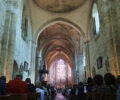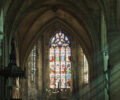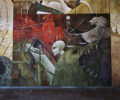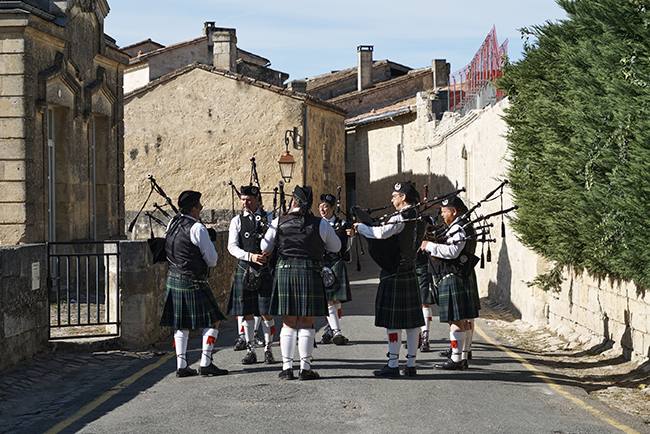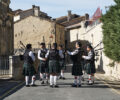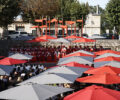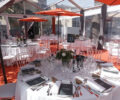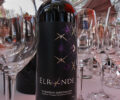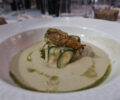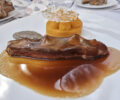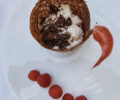Behind the Scenes with Saint-Émilion’s Secret Society
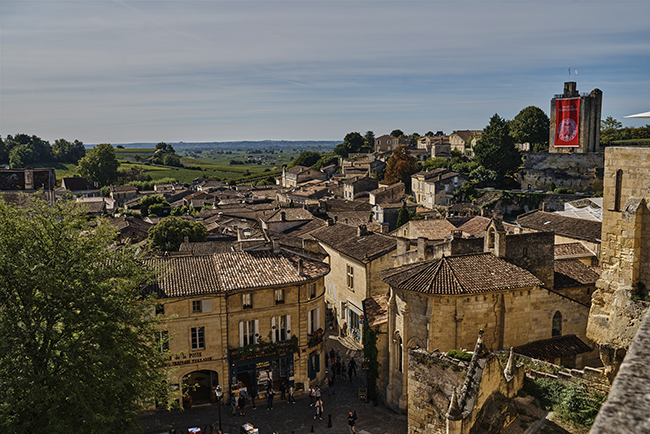

Take a peek at the impressive induction ceremony for the Jurats of Saint-Émilion, France’s oldest secret society, where well-kept traditions and wine meet
Well-kept traditions define a well-kept secret society, one of the oldest in the world. But perhaps this ancient society is not so secretive if you are well-connected in the world of wine.
The Saint-Émilion Jurade is France’s oldest wine society, dating back to 1199 when it was founded by the English King John I, who was also the Duke of Normandy and brother of King Richard the Lionheart. Its purpose was to ensure that the appellation of Saint-Émilion produced high quality wines and to prevent fraudulent versions from stealing their profits. Today, its members, called Jurats, celebrate and promote Saint-Émilion wines throughout the world.
The Jurats are thoroughly vetted via a long, arduous process sometimes involving multiple months and plenty of information submitted by the applicants. Many members are the winemakers of nearby chateaux in the Saint-Émilion appellation which is part of the greater Bordeaux wine region. Others are wine merchants or involved with wine in other ways. Yet, they all have this in common: they have applied for, been accepted by, and then inducted into this most prestigious wine organization whose induction ceremony is carried out twice per year in the medieval, cobblestoned village of Saint-Émilion, a picturesque village located 40 minutes east of the city of Bordeaux.
Red robes and bagpipes
While new members can also be inducted during the Spring Festival (the third Sunday in June), the Harvest Proclamation festival on the third Sunday in September marks the honor of becoming a distinguished member with grand pomp and circumstance. The festivities begin at 9:00am when a light breakfast is served on the lawn of the Hotel de Ville. Gathering in the brisk, autumn air, the inductees, members, and guests greet one another. The Jurats and soon-to-be Jurats don their dazzling red robes and their snowy white stoles as they line up for their majestic march through town. From the Hotel de Ville, they parade with much fanfare and in step with tunes from bagpipes until they arrive at the steps of the Saint-Émilion Church, also known as l’Église Collégiale. Before entering this magnificent church, a ceremony features a large golden cross held high above the crowd as the bagpipers continue to waft their Celtic melodies into the crisp morning air.
The Jurats enter the church, followed by their guests and members of the public. Inside this mostly Gothic-style church, the sunlight streams through an eastern stained-glass window. A sermon is delivered and blessings are pronounced on the imminent grape harvest. The church, slightly older than the wine organization itself, was constructed beginning in 1100 and was completed in the 15th century. The adjoining cloister houses a spectacular work of art entitled The Apocalypse by painter François Peltier. Spanning 38.5 meters long and five meters high, the colorful painting is actually a set of five paintings using glazed oil on five different types of wood and depicts images of the struggle between good and evil from the Book of Revelation, the last book in the Bible.
A formidable feast
Following the church service, as morning stretches to afternoon, the induction ceremony takes place in the dry moat of the Cardinal Palace where the new inductees are introduced, and by pledging an oath, become official members of the Jurade.
Perhaps this is the climax of the pomp before lunch is served in a massive venue across from the Hotel de Ville called La Salle des Dominicains. Several hundred members and guests find their seats to await the delectable cuisine and the twelve different bottles of Saint-Émilion wine that will be paired with it. Four times throughout the meal, red apron-clad waitstaff synchronize the delivery of a trio of bottles to each table. Musicians perform and speechmakers speak until all the food and wine has disappeared. The guests mill around and then out of the venue while members climb to the top of La Tour du Roy (King’s Tower), a 13th-century keep, to declare le ban des vendanges lifted: let the harvest commence!
As the sun sets, the gathering of grapes officially begins and the festivities of a secret society fade into the recesses of Saint-Émilion, only to surface again next year. To riff on Shakespeare’s Othello, this is truly the pride, pomp, and circumstance of glorious wine!
Lead photo credit : The quaint, cobblestoned town of Saint-Émilion © Dawn Dailey
Share to: Facebook Twitter LinkedIn Email
More in Bordeaux, French history, French wine, vineyards
By Dawn Dailey
Leave a reply
Your email address will not be published. Required fields are marked *

